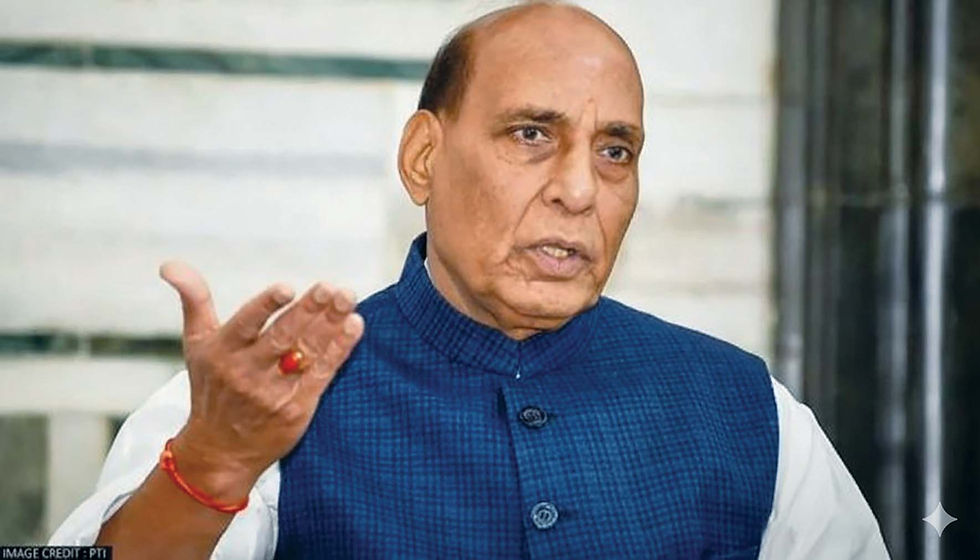The Brahmaputra in balance: Between promise and peril
- Amey Chitale

- Aug 20
- 4 min read
China’s dams on the Brahmaputra threaten India’s water security, but they also open the door to fragile cooperation.

After the Pahalgam attack, India took a bold step by suspending the Indus Water Treaty—its first attempt to wield transboundary rivers as strategic leverage against Pakistan. As the upper riparian in the Indus basin, India enjoys a geographic edge. On the Brahmaputra, however, it is the lower riparian, exposed to China’s upstream manoeuvres. That vulnerability has deepened with reports of new Chinese water infrastructure near the border, fuelling fears of deliberate flow manipulation.
The Brahmaputra rises from the Chemayungdung Glacier near Mount Kailash in Tibet, flowing east for 1,700km as the YarlungTsangpo. South of the Namcha Barwa canyon it plunges into one of the world’s deepest gorges before entering India at Gelling in Arunachal Pradesh, where it becomes the Siang, and later the Brahmaputra in Assam. Fed by tributaries like the Lohit, Dibang, Subansiri and Teesta, it becomes the Jamuna in Bangladesh, merging with the Ganges and Meghna before reaching the Bay of Bengal.
The basin spans 580,000 sq km: China holds 50.5 percent, India 33.6 percent, Bangladesh 8.1 percent and Bhutan 7.8 percent. Yet China contributes only 22–30 percent of annual discharge, while India accounts for 65–80 percent. Sparse rainfall on the Tibetan plateau (about 300mm a year) contrasts with the 2,371mm that drenches India’s portion. During the monsoon, India’s share rises to 75–80 percent, swelling the river from 2,000–3,000 cubic metres per second at the border to as much as 20,000 downstream. In the dry season, China’s contribution climbs to 35–40 percent, thanks to snowmelt.
India and China have experimented with cooperation, though none of their arrangements constitute a binding water-sharing pact. A 2002 MoU initiated data-sharing during floods; in 2006 the Expert Level Mechanism was set up; and a broader agreement followed in 2013, renewed in 2018. Yet geopolitics has repeatedly disrupted them. China withheld data during the 2017 Doklam stand-off and has shared none since 2022. The Brahmaputra MoU expired in June 2023.
Now looms China’s most ambitious project yet: the Medog Hydropower Station, only 30km from the Indian border. Approved in December 2024 and under construction since July 2025, the $167bn scheme aims to generate 60,000MW—triple the Three Gorges Dam’s annual output by 2033. China already operates smaller dams at Zangmu, Dagu, Jiexu and Jiacha. Medog’s design includes five cascade stations exploiting a 2,000m drop over 50km and four 20km tunnels through Namcha Barwa to divert the river, granting Beijing enormous control.
Most Chinese projects on the Brahmaputra are ‘run-of-river,’ storing little water and depending on natural flow. Counterintuitively, reduced upstream flow might even help Assam, where monsoon floods displace millions and ravage farmland. A more predictable, moderated flow could ease flood severity and siltation. But dams still allow short-term regulation. In extremis, China could weaponize water, triggering flash floods through sudden releases or worsening dry-season shortages by retaining flows.
The Medog project thus embodies both promise and peril. It will boost China’s energy supply and geopolitical leverage while raising alarm in India over water security, agriculture and ecology. The Brahmaputra carries heavy sediment vital to Assam’s fertile plains and the Bengal delta. With the canyon contributing an estimated 45 percent of downstream silt, tunnels diverting the river could sharply reduce sediment loads, undermining soil fertility and hastening coastal erosion, especially in the fragile Sundarbans.
Geopolitically, Beijing’s capacity to alter flows during periods of tension heightens India’s vulnerability. Ecologically, the Medog site lies in a biodiversity hotspot, within a seismic zone, where construction risks destabilising fragile ecosystems. The long-term effects are unknowable and potentially irreversible.
India’s counter lies in its own mega-plan: the Upper Siang Multipurpose Project in Arunachal Pradesh. Estimated at Rs. 1.5trn, it aims to generate 11,000MW and store 9.2bn cubic metres of water behind a 267-metre dam—an answer to China’s hydro-hegemony. Proponents tout its value for energy security, flood control and strategic leverage. But local resistance is fierce. Indigenous Adi communities fear displacement and ecological harm; protests have disrupted surveys and damaged equipment.
The dispute reflects broader Sino-Indian rivalry over borders, trade and influence. China embeds water infrastructure in its Belt and Road Initiative; India, meanwhile, must balance strategic autonomy with cooperation. Greater transparency with Bangladesh and Bhutan, plus resilient infrastructure at home, could strengthen its hand.
Climate change makes matters worse. Himalayan glaciers are melting 65 percent faster than in 2010, and may lose 80 percent of their mass by century’s end. The Brahmaputra depends less on glaciers than on monsoon rains, but those rains are becoming erratic. Agriculture, hydropower and disaster planning are all at risk, raising the spectre of migration and instability.
India needs a multi-pronged response: reviving data-sharing with China, accelerating projects like the Upper Siang through genuine consultation, and building independent hydrological monitoring to reduce reliance on external data. Trilateral cooperation with Bangladesh and Bhutan should be strengthened.
China’s mega-projects pose real risks, but they also offer opportunities for cooperation if framed within shared hydrological realities. India should use international platforms such as BRICS+ to keep dialogue alive. With U.S.–India ties strained by Donald Trump’s hostile posture, BRICS+ could offer a pragmatic channel to temper Sino-Indian tensions.
The Brahmaputra, once seen mainly as a life-giving river, is now becoming an arena of geopolitical rivalry. Whether it turns into a source of cooperation or conflict depends on whether India and China can resist the temptation to turn water into a weapon.
(The author is a Chartered Accountant with a leading company in Mumbai. Views personal)





Comments